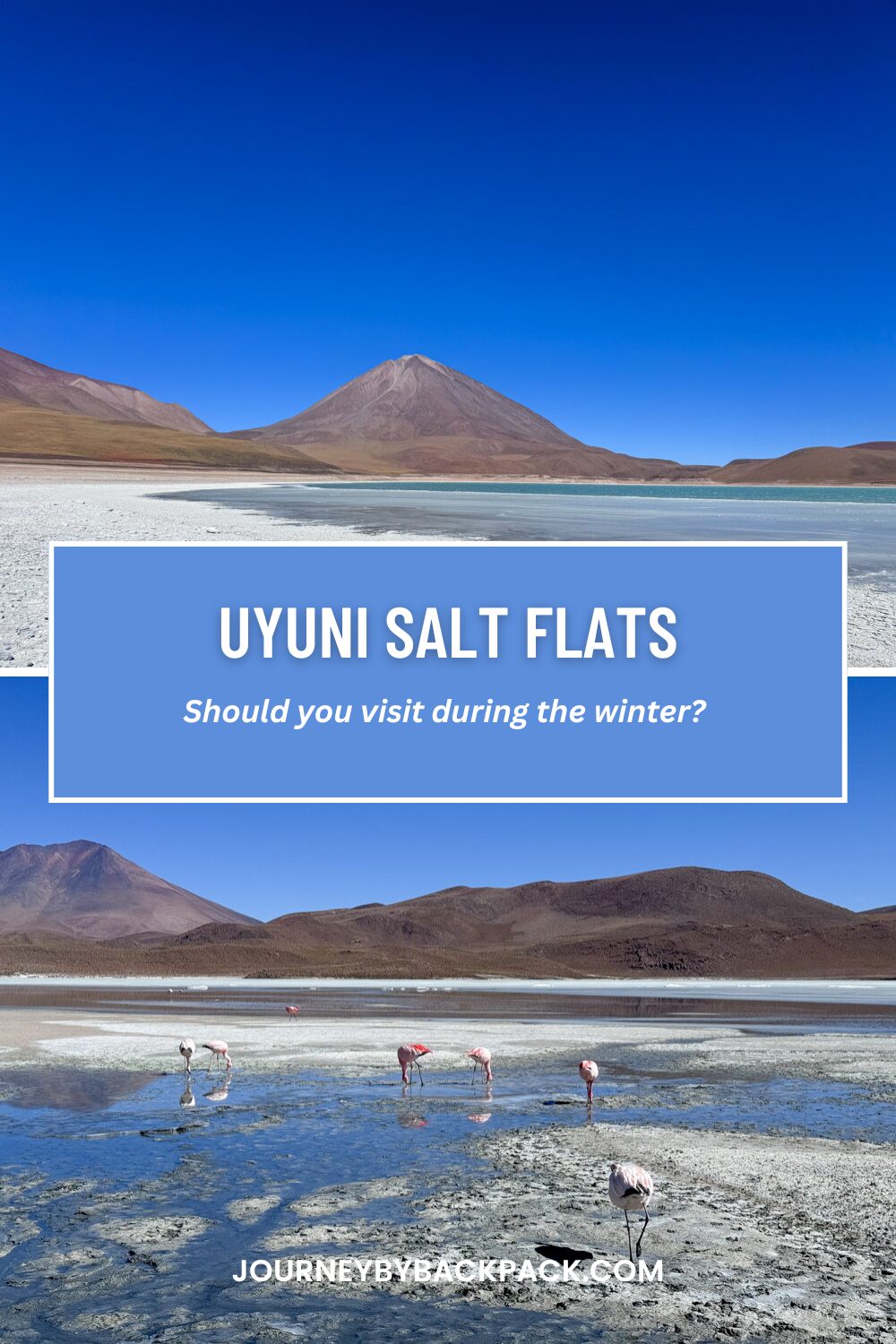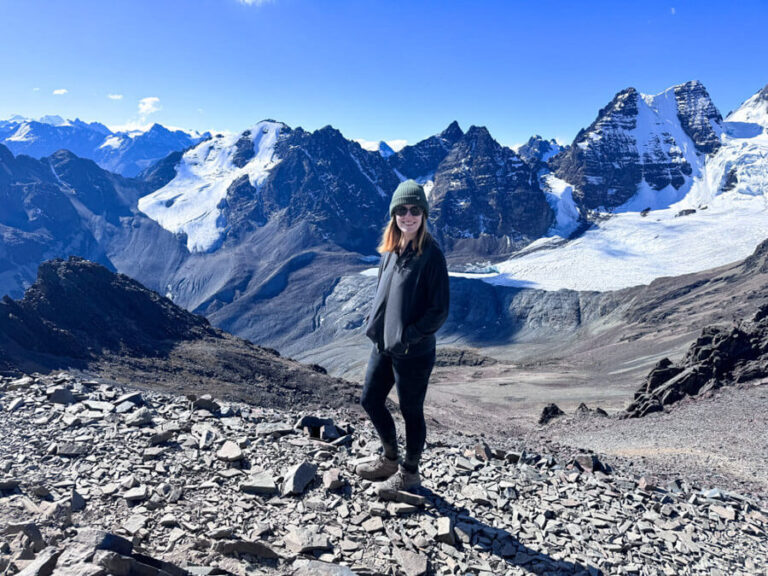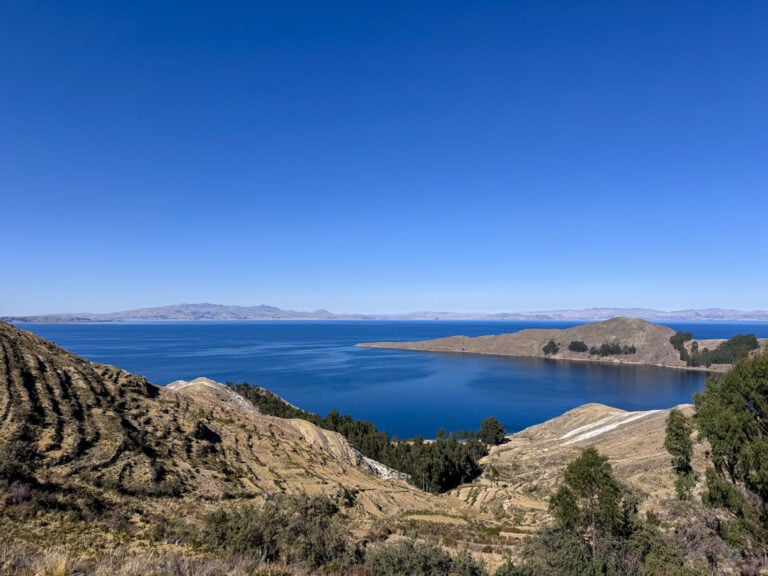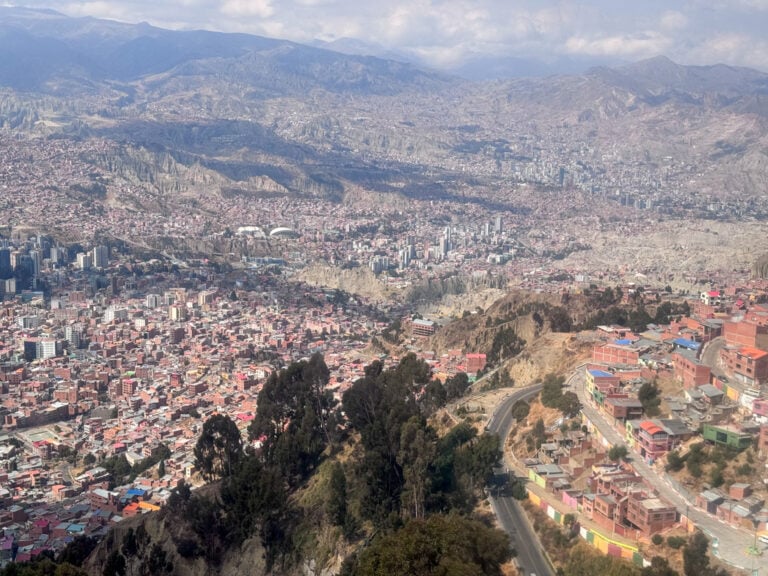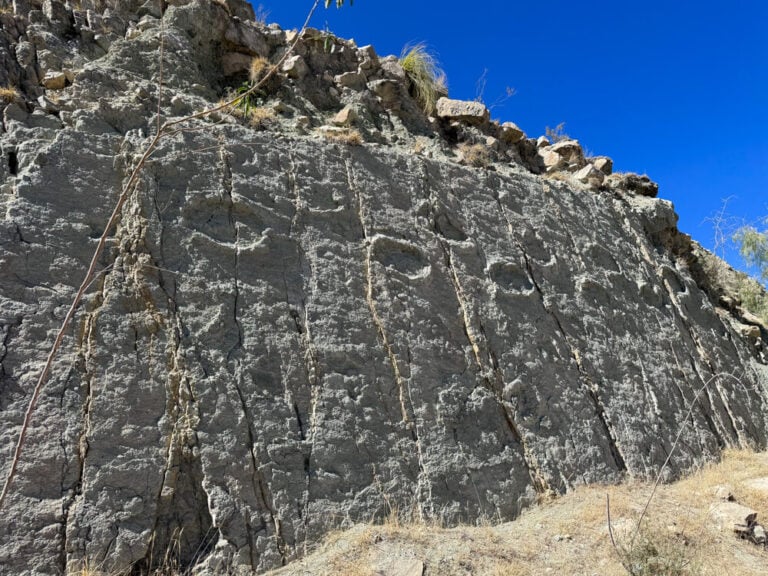Visiting the Uyuni Salt Flats in Winter: 6 Things to Know
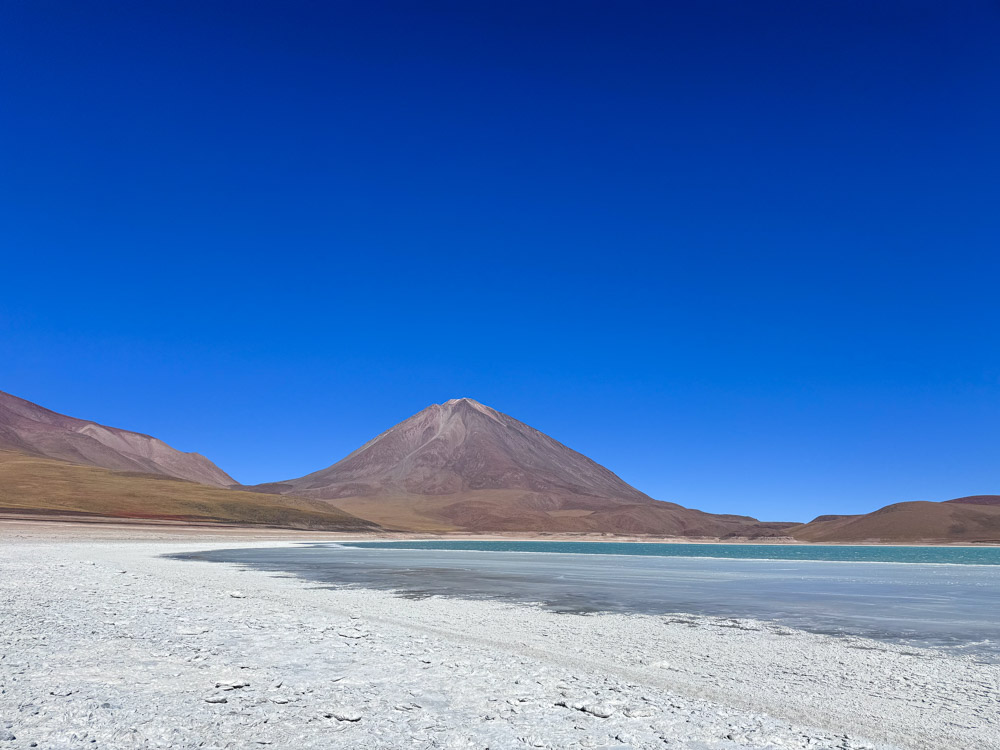
A trip across Salar de Uyuni is one of the absolute best things to do in Bolivia and arguably South America as a whole. This natural wonder is the world’s largest salt flat and stretches as far as the eye can see.
The Uyuni Salt Flats can be visited all year round, but most people will argue that the rainy season (December to March) is the best time to visit. Despite the wet weather and cloudy skies, visitors are rewarded with a unique reflection effect on the Salt Flats.
However, for many people travelling around South America, timing their Salt Flats visit to coincide with this isn’t always possible.
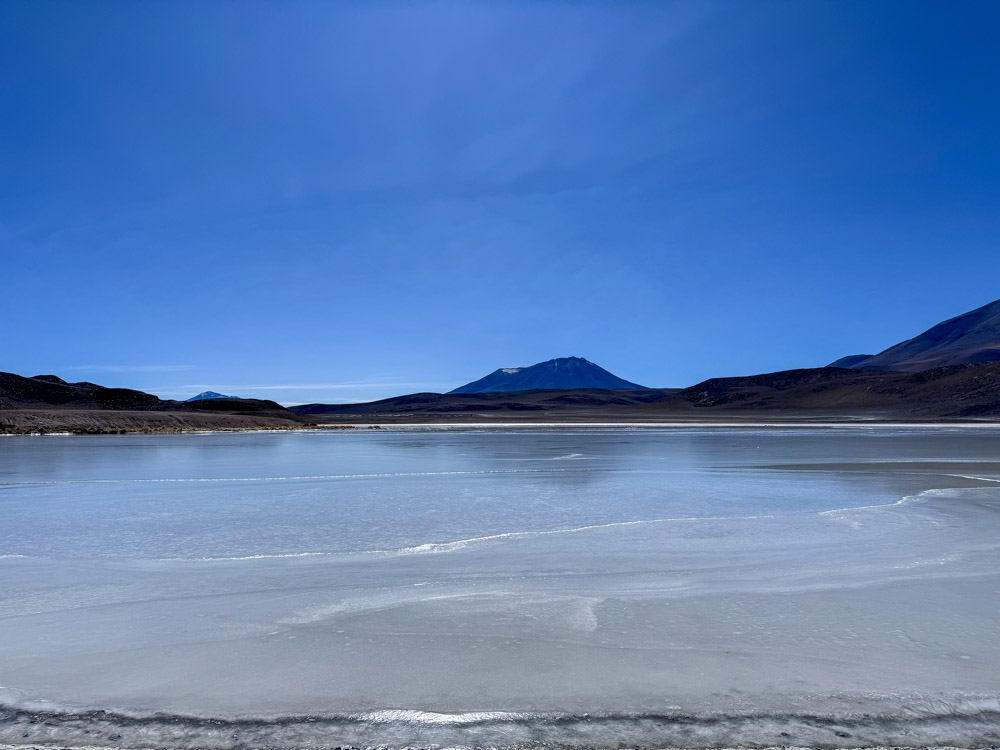
I visited the Salt Flats in the winter (July) and couldn’t have asked for a better experience. I read in so many places that if you visit outside of the rainy season, it won’t be that special. However, this couldn’t be further from the truth.
The winter in Salar de Uyuni is a magnificent time to visit. The days are sunny, the lagoons are vibrant and all the top spots to visit are accessible (In the wetter months, many places can’t be visited due to flooding).
In this post, I’ve shared everything you need to know about visiting the Uyuni Salt Flats in winter based on my experience. I’ve also shared my thoughts on whether it’s worthwhile (spoiler, it is!).
Visiting the Uyuni Salt Flats in the winter
Winter in the Salt Flats occurs between May and September. The average daytime temperature is between -4°C (25°F) and 12°C (53°F), and it is much lower at night.
Although these are the coldest months, it’s also the dry season. Most days have clear, sunny skies, making it perfect for exploring.
Despite the winter offering great weather, the most popular time to visit the Salt Flats is in the rainy season between December and March. Although the weather can be challenging, visitors are rewarded with a unique natural wonder – a layer of water sits on top of the salt, creating a mesmerising mirror effect.
Visiting in the winter means missing the famous reflections, but there are still plenty of reasons to visit Salar de Uyuni during the winter months. Keep reading to find out more.

Things to know about visiting Salar de Uyuni in winter
It’s cold, like… really cold
I knew visiting the Uyuni Salt Flats in the winter would be cold, but I wasn’t expecting it to be as cold as it was. Even during the daytime, I wore several layers and was still chilled to the bone. At 4 am on our first night, the temperature dropped to -24°C (-11°F).
It’s worth pointing out there was a freak windstorm when I visited and an unusual cold front, which forced the temperature to drop lower than normal for the time of year. However, other backpackers I met who had visited a couple of weeks earlier and later still very much felt the cold.
Typically, the average temperature during the day is between -4°C (25°F) and 12°C (53°F). However, most tours of Salar de Uyuni include trips to higher altitudes, such as the Sol de Mañana Geyser Field which lies at 5,000m. There’s nearly always a strong wind here, which forces the temperature to be much lower.
Ultimately, visiting the Uyuni Salt Flats in winter is cold, even during the day, especially at the high altitudes.
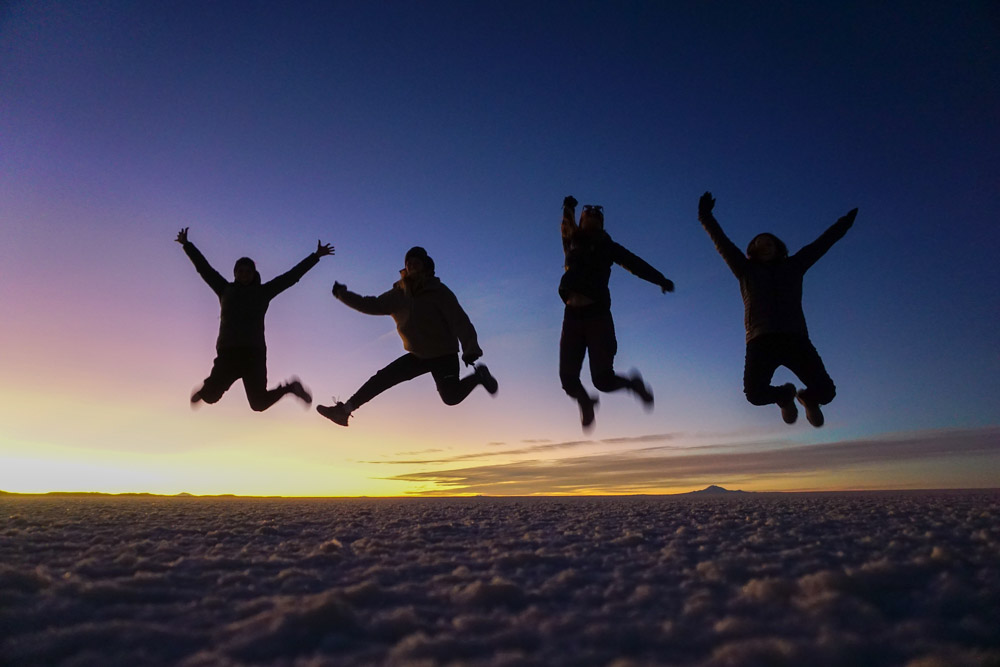
Despite the freezing cold, I absolutely loved visiting the salt flats at this time of year. It felt like much more of an adventure and if I am being honest, I would rather be too cold than too hot.
If you’re worried about the cold, I recommend choosing a reputable company for the tour. It will cost more money, but their jeeps have working heaters, and the guides usually provide hot water bottles, thermal sleeping bags, and extra blankets for the night.
It is essential to pack plenty of warm layers and clothes, including a down coat, windproof jacket, and items such as a buff, hat, and gloves.
I was able to pick up some affordable thermal layers from a local shop in San Pedro de Atacama which were brilliant. If you’re starting the tour from Uyuni, you can buy warm layers from the local market.
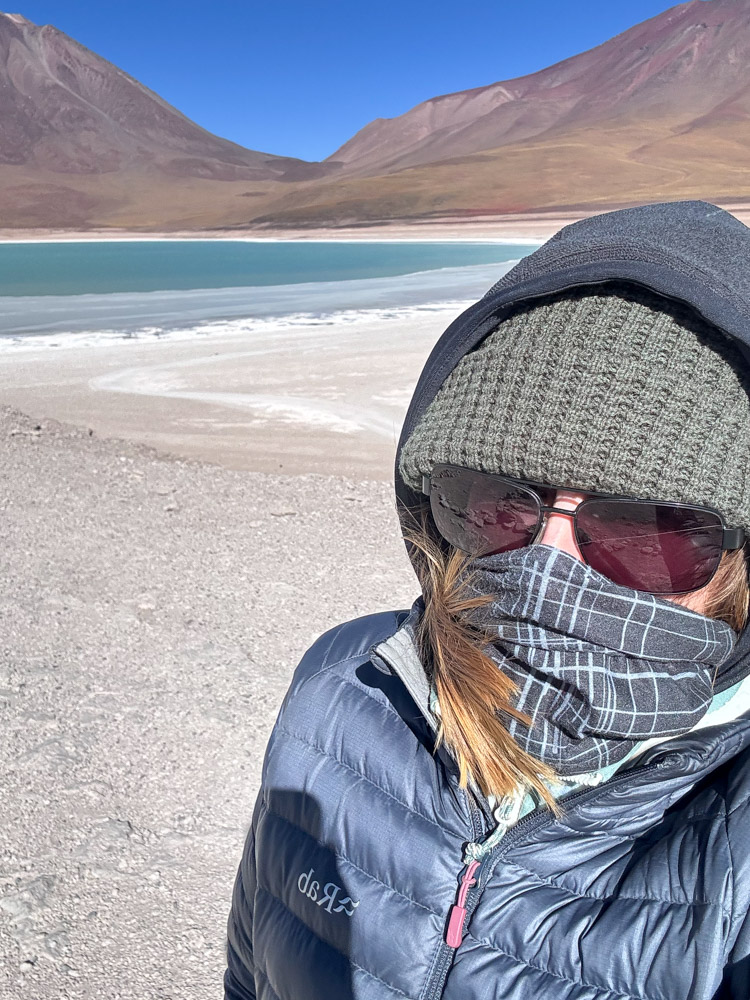
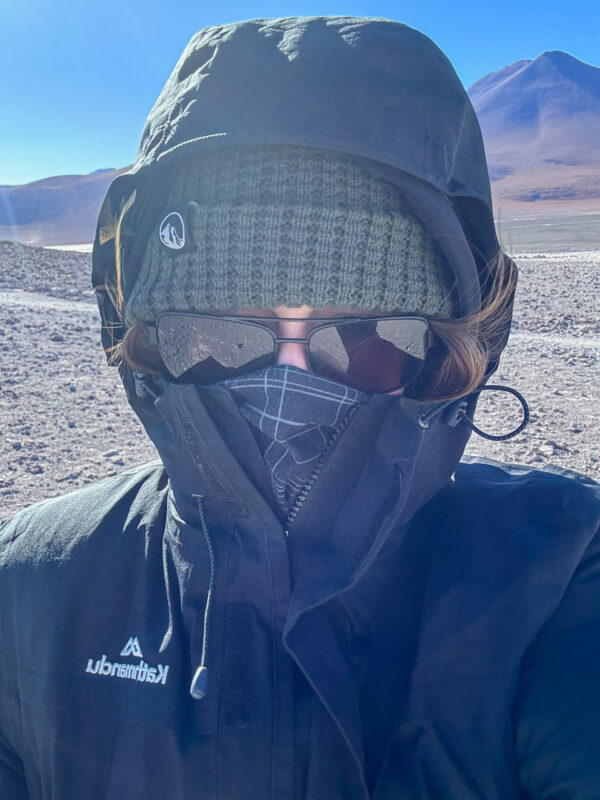
There are no reflections
The Salt Flats are famous for their iconic reflections which normally occur from December and into April. Known as the world’s largest mirror, once the rain begins, the water sits on top of the salt creating a stunning reflection.
The winter months are also the dry season, so there is generally no rain during this period. Unfortunately, this means no mirror reflections on the salt flats.
Does this matter? It depends. For some, seeing the mirror effect on the salt flats is a must, and there’s no point in visiting without it. However, I have to disagree. Despite the lack of reflections during my visit, the Salt Flats were still beautiful.
It’s also worth pointing out that there is *so* much more to Salar de Uyuni than just the Salt Flats. With colourful lagoons, towering volcanoes, and several species of Flamingoes, a Uyuni Salt Flats tour goes well beyond taking fun pictures on the salt flats.
Multi-day tours will include a trip to Eduardo Avaroa National Park, which is filled with natural wonders. Winter is a great time to visit, and there are several advantages to visiting Salar de Uyuni in the winter, which I’ve spoken about below.
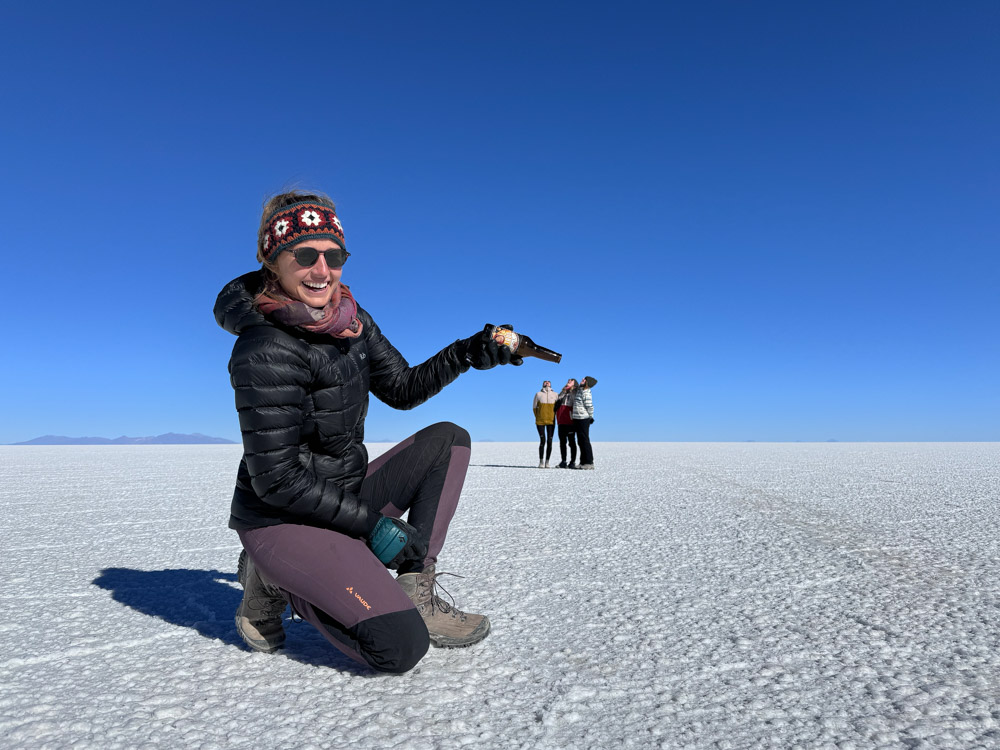
You can visit Incahuasi Island
One of my favourite stops during the three-day tour was Isla Inchauasi. This stunning island is right in the centre of the Uyuni Salt Flats. The unique place is known for its giant cacti and epic views, it is a highlight for most visitors.
Our group went for sunrise and hiked to the top to watch the magic happen. Surrounded by endless salt flats as far as the eye can see, it felt like we were above the clouds! The views were magnificent, and it was an incredible experience.
Accessing Inchauasi Island can be impossible during the summer months. In reality, it’s almost guaranteed you won’t be able to visit between January and March as the water levels are nearly always too high.
So, while you might not see the reflections if you visit the salt flats during the winter, you will hopefully experience the magic of Inchauasi Island.
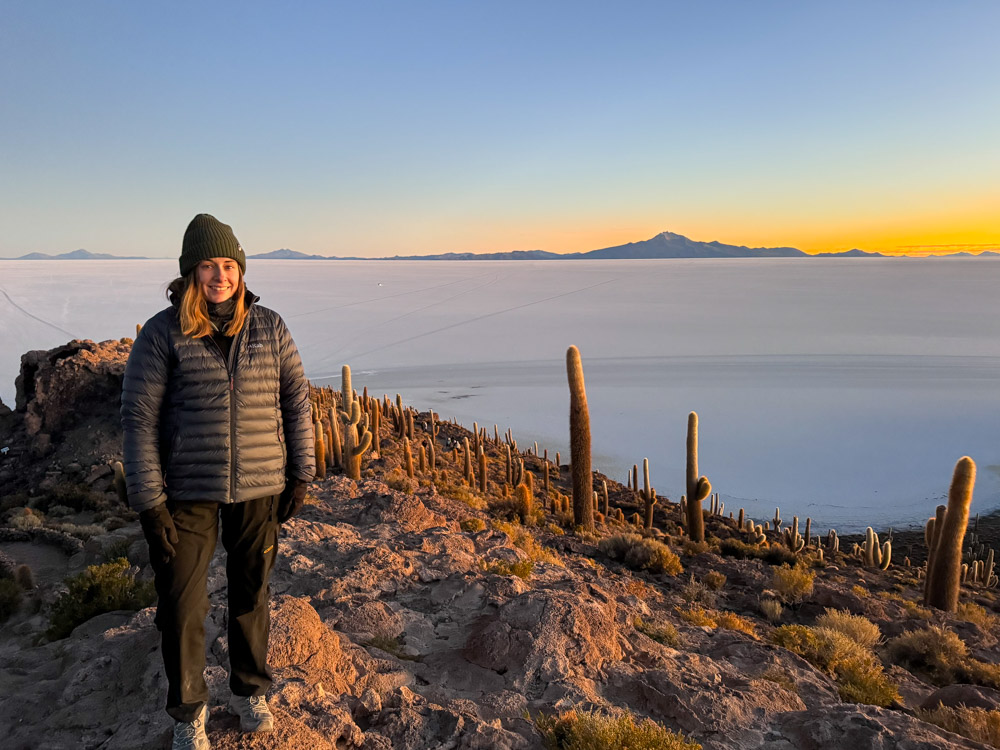
The skies are clearer (and there are incredible views)
If you visit Salar de Uyuni in winter, you’re almost guaranteed clear skies. While it’s still freezing, the sunny days make it all the more bearable.
With clear skies come incredible views. The Salar de Uyuni area is truly spectacular; it’s hard to believe somewhere like this exists on Earth. Everywhere I looked, the scenery took my breath away.
Our guide told us that many of the volcanoes and lagoons in the distance can be difficult to see during the summer months, especially on cloudy days. He also told us that the lagoons boast much more vibrant colours during the winter. I have to say, witnessing the frozen colourful lagoons felt very special.
Laguna Colorada (or Red Lagoon) was particularly special. Although part of the lagoon was frozen, there were still endless Flamingoes. Witnessing the lagoon’s vibrant red colour surrounded by mountains and otherworldly scenery was a very surreal experience.
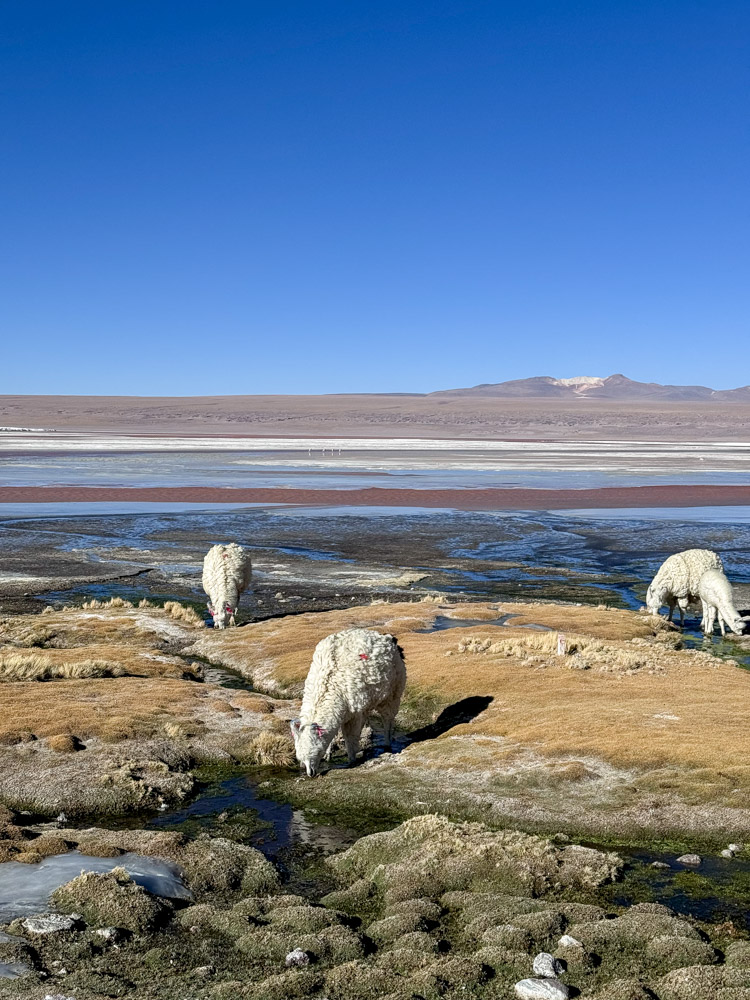

With minimal light pollution and clear skies, the stargazing opportunities during winter are also fantastic (try to avoid the full moon). I had just been stargazing in San Pedro de Atacama but was still completely blown away by the stargazing on the Salt Flats. We even saw the Milky Way.
Another great spot to visit in the winter is Laguna Verde (the Green Lagoon). Make sure your tour includes a stop here. Due to the rich mineral content, the water’s colour appears greenish, which is at its strongest during the winter months. With snow-capped mountains in the background, it was one of my favourite places on the tour.
It’s quieter and can sometimes be cheaper
The winter months tend to be quieter than the rainy season, meaning fewer tourists and cheaper prices. You’ll likely be able to find cheaper deals during the dry season and winter months.
We did see quite a few other tour groups, but never more than three or four other jeeps (other than the Salt Flat themselves, which include day trippers).
Depending on which direction you’re travelling in, you can book your tour last minute in San Pedro de Atacama in northern Chile or from the town of Uyuni in Bolivia. But if you can, I highly recommend going on tours from Tupiza in Bolivia. Most of these tours finish in Uyuni, but it’s possible to transfer to San Pedro de Atacama.
I went with La Torre Tours and I can’t recommend them enough. They’re on the more expensive side, but the quality of the tour is brilliant. They provided us with a sleeping bag and extra blankets, plus the jeep had a heater.
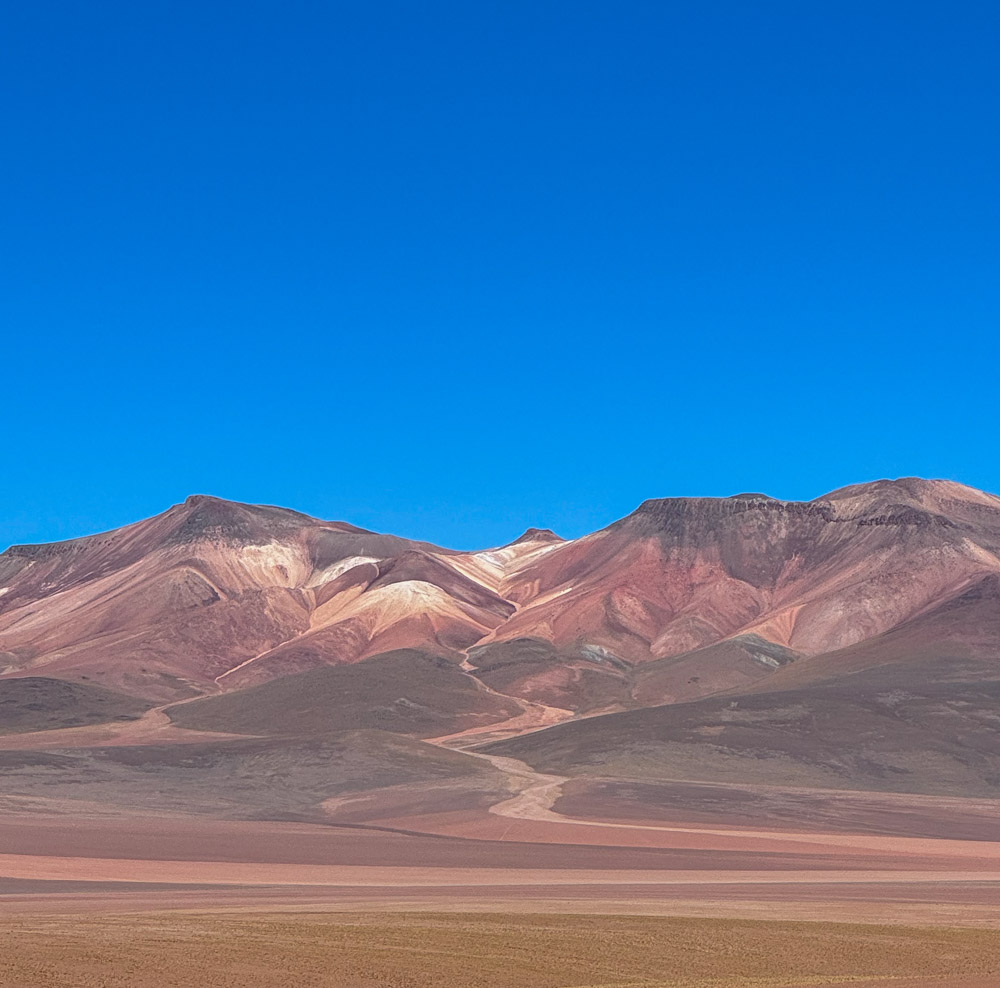
There can be less wildlife
With cold weather and limited water, many animals leave the area during this time of year. Our guide warned us we may not see many Flamingoes as some lagoons had frozen. However, we were very lucky and still saw endless Flamingoes in several places.
If you visit during the summer, I’m sure there will be even more Flamingoes, but we still saw plenty, and I certainly didn’t feel like I missed out. We also saw vicuñas, llamas, and a couple of wild foxes.
However, a winter visit to the Uyuni Salt Flats could mean fewer wildlife sightings.
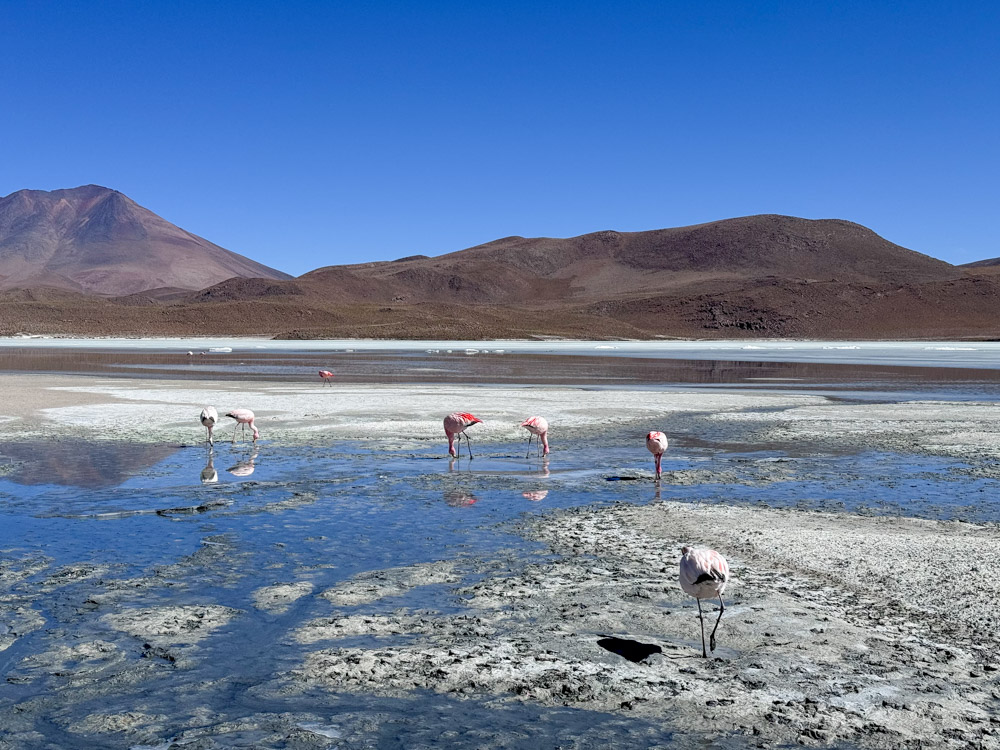
Summary: Should you visit Salar de Uyuni in the winter?
Don’t be discouraged from visiting the Bolivian Salt Flats during the winter. Ultimately, the area is a year-round destination, and winter is a great time to visit. With clear skies, epic stargazing and incredible views, you’re more or less guaranteed a wonderful experience.
Yes, it’s going to be cold. Like… really, REALLY cold. But you can be prepared by packing plenty of warm clothing and choosing a reputable company that will provide warm layers for the freezing nights.
The only real downside of visiting the Uyuni Salt Flats in the winter is missing out on the mirror effect as this only occurs during the wet season. However, as I mentioned above, a winter trip has plenty of advantages. It will all come down to how much you want to see the reflections. For what it’s worth, the frozen lagoons created incredible mirror effects during my visit.
Honesty, I don’t think there is a perfect time to visit the salt flats. But for me, visiting Inchauasi Island for sunrise, witnessing the stunning views with clear skies and epic stargazing ultimately outweighed seeing the reflections and mirror effect. I’m really happy I chose to visit Salar de Uyuni in the winter.
